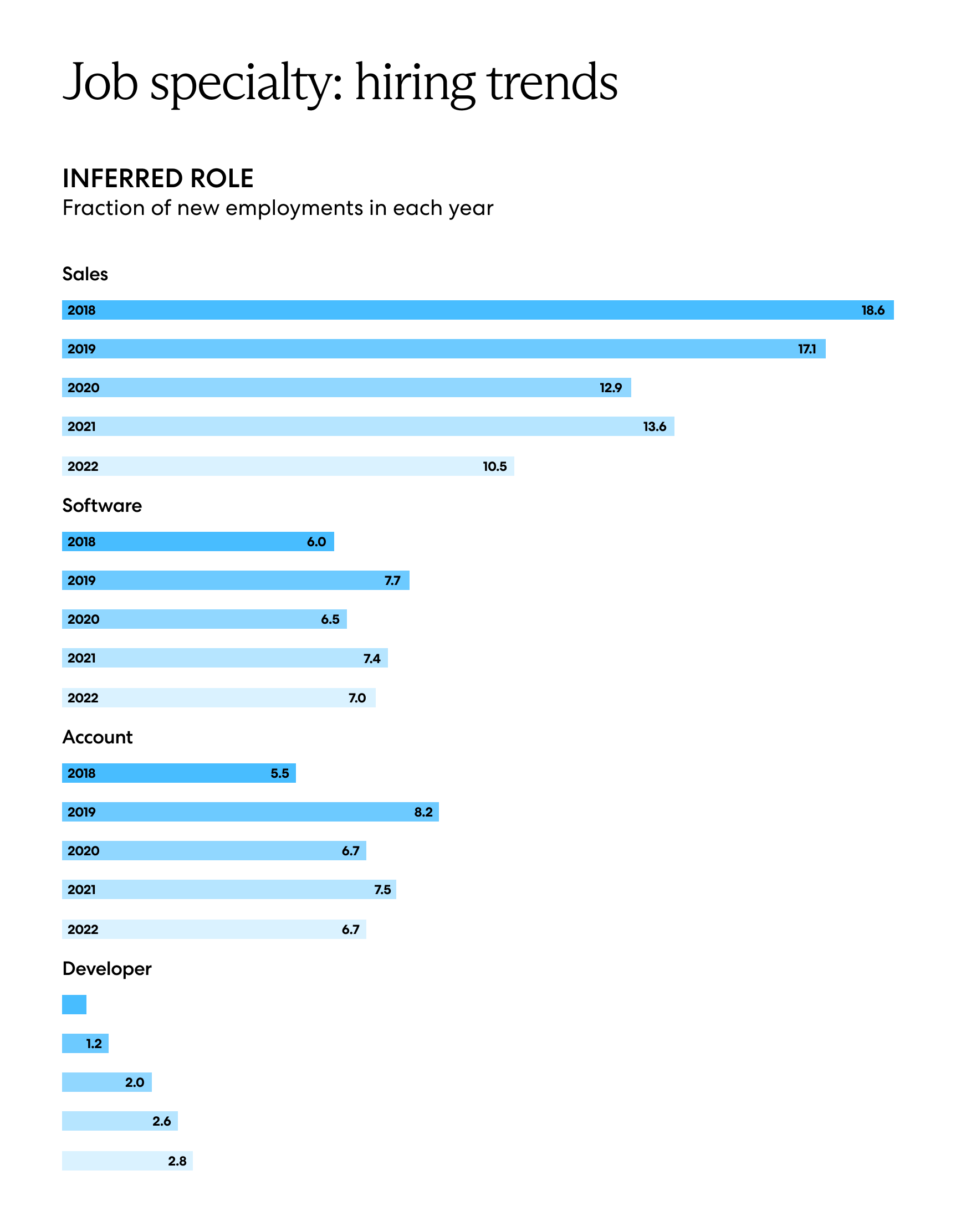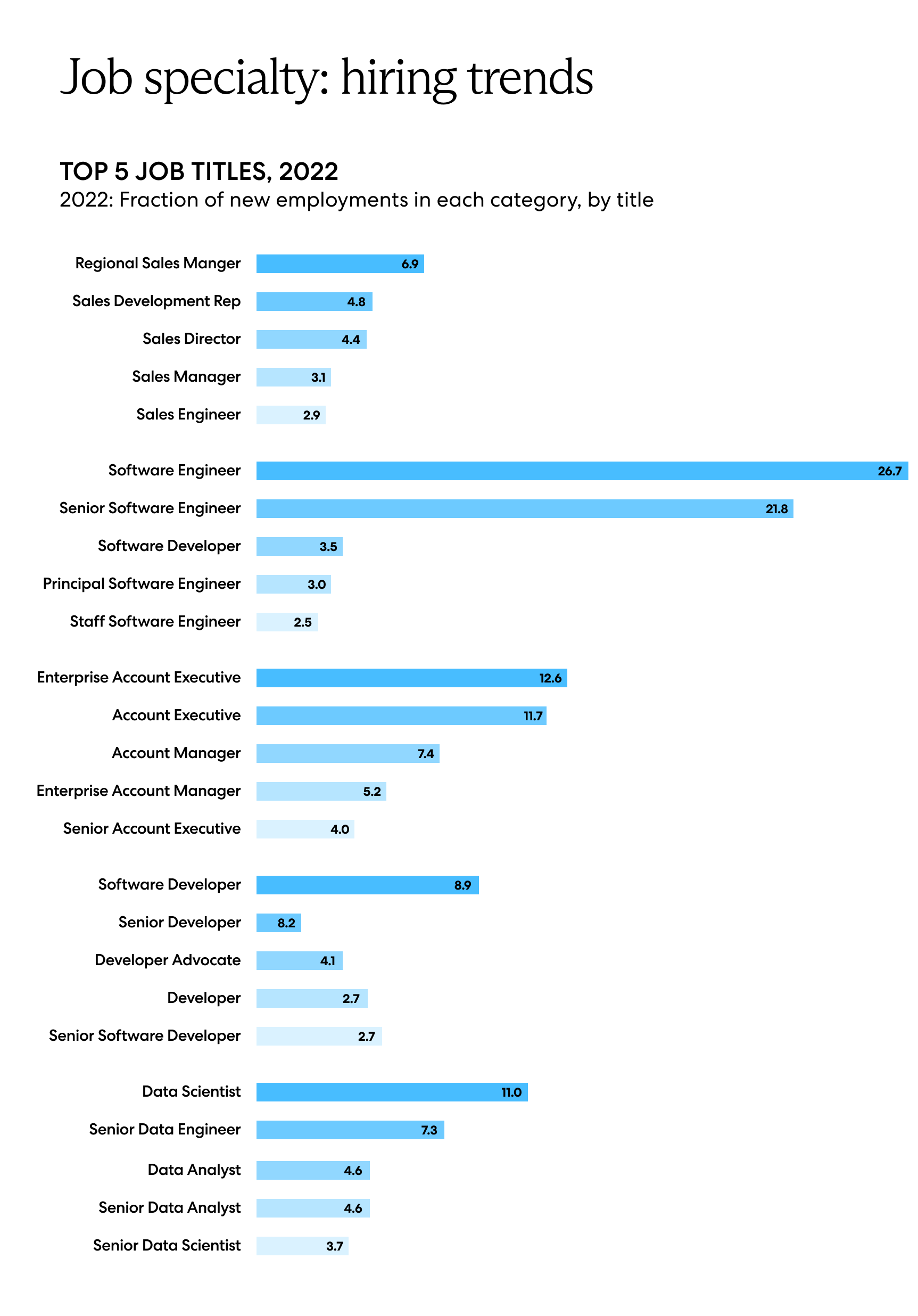Companies around the world are reaping the benefits of building global workforces. Hiring across borders helps them reach new customers, broaden their talent pools, expand their footprints, provide employees with flexible work options, and more.
While there are countless reasons to go global, we’ve discovered one constant: crossing borders helps employers rise above many of the challenges they’re facing right now—from skills shortages to tightened budgets due to economic uncertainty—so they can take their companies to new heights.
But where exactly are companies going? And who are they hiring?
Over the past five years (2018-2022), we’ve analyzed global hiring trends from hundreds of companies we serve. Here’s a look at some of our key findings—starting with where companies are hiring across the globe.
Global Hiring Trends: Where Employers Are Building Teams
Portugal and Brazil are among the fastest-growing countries for global employment.
In 2022, relative to 2021, employment in Portugal grew 2.5 times as fast as overall employment. Likewise, since 2020, Brazil has emerged as an up-and-coming location to hire new talent, rising from the 13th most popular country for employment in 2019 to the 4th most popular in 2021 and 2022.
The United Kingdom, Canada, and India are also hot spots for companies hiring globally.
When comparing global hiring trends in other areas of the world from 2018-2022, we found hiring in the U.K., Canada, and India has made up nearly 30% of all new employment globally.
The United States led the Americas in employment growth.
In 2022, the U.S. led the Americas with a 45% increase in employment growth. After the U.S., Mexico (30%) and Columbia (14%) followed as the fastest-growing countries for employers in the Americas.
Greece, Japan, and Belgium were popular hiring destinations, too.
In 2022, employment in Greece grew nearly twice as fast as global growth. At the same time, employment in Japan and Belgium grew about 50% faster—just as it did in the U.S.

Hiring Trends 2023: What Roles Are in Demand?
Whether companies are trying to rise above competitive hiring markets or attract the world’s best talent, technology has made it easier to build diverse, talented teams everywhere. Workforce management platforms streamline the process of onboarding, paying, and managing talent across borders. At the same time, AI and data-gathering technology help employers gain the insights they need to make better business decisions.
Technological advancements also increase the demand for skilled talent. To understand how new technology creates the need for new roles and careers worldwide, we looked into job specializations and in-demand skills that are heating up across the world.
Here’s what we uncovered.
Data Jobs Are on the Rise
From 2018-2022, data-related jobs saw a six-fold increase in the fraction of new employment.
Demand for Sales Roles Is Decreasing
During the same period, our data found that sales jobs dropped substantially from nearly 20% to about 10%.
More Specialists, Fewer Supervisors
Over the last five years, job titles involving “senior” almost doubled from 12% to nearly 20% of new global employments. Meanwhile, manager- and director-level jobs comprised a decreasing fraction of new employment.


Making Opportunities Borderless for Everyone, Everywhere
Regardless of which roles employers target, going global offers access to the world’s top job seekers—not just candidates in their immediate vicinity. Hiring across borders also helps companies overcome economic uncertainty by hiring talent with the right skills and within their budgets.
What’s more, data proves that when businesses expand globally, they have the potential to boost their revenue streams through having access to a more extensive and diverse talent pool.
Having the right information is the first step to helping businesses plan a successful global expansion strategy. To learn more about our methodology for gathering this data or how we help companies confidently go global, reach out to Velocity Global today.
Methodology
This data was collected from January 2018 to December 2022, and there were a total of 12,257 employments in 137 countries over this period. Collectively, there were 2,011 clients in 131 industries, representing 26 major industry groups. For example, an "industry" would be "Custom Software & IT Services," which falls into the "Software" industry group.
Topic:
HR Strategies



